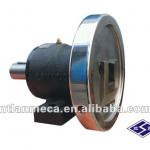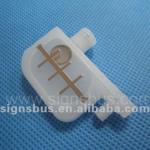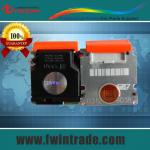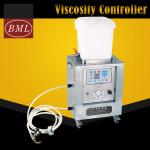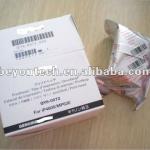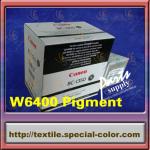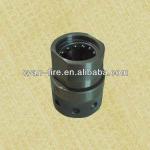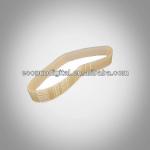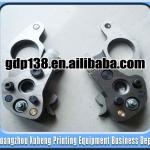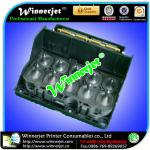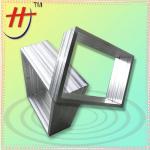Pad Printer Silicone Rubber Print Head
| Place of Origin:GUA,China China (Mainland) | Brand Name:ENGY | Model Number:ENGY | Type:pad printing pad,Print Head |
| Use:KENT, TAMPO, EverBright, WUTUNG,ETC... | Printing Type:Pad Printer machine | Products Name:Pad Printer Silicone Rubber Print Head | Pad Material:Silicone Rubber |
| Pad Hardness:Soft, Middle, Hard | Pad Colour:Red, Yellow, White, Green, Blue,etc... | Pad Shape:Round/Long/Square/So on | Property:Antistatic/Normal |
| Usage:Pad Printer Head | Package:Use Carton Box, then Put into Wooden Box |
Pad Printer Silicone Rubber Print Head
1. They are the vehicle used to transfer colour from the steel plates to the object to be decorated.
2. Their shape and hardness are of fundamental importance for good printing results; at first they were made of gelatine, then the advent of silicone rubber with variable degrees of hardness and high tear resistance revolutionised the pad printing process simplifying printing and greatly improving the quality of the products decorated.
How to select the pads for the pad printer
Pad selection begins with an analysis of the object to be printed.
1. First of all check the size of the print or decoration, where it is to be positioned on the piece and the type of machine that will be used to perform the work. A pad should have a printing surface at least 20% larger than the image that is to be reproduced, especially if it is not printed on a flat surface. The main characteristics of a pad are: the shape and hardness. It is possible to choose from hundreds of pad shapes (illustration) and, except in rare cases, pads almost always have a peak, which may be more or less marked, to prevent the formation of air bubbles on the surface of the ink during withdrawal from the cliché. When pressed onto the cliché, the special shape of the pad pushes any air towards the external area of the cliché itself, making it easier to pick up the colour and preventing the formation of small air bubbles between the pad and the colour. In fact if air bubbles were to form during withdrawal, they could prevent the colour from sticking to the pad resulting in more or less marked imperfections on the final image. The same situation is true when colour is released onto the object. The illustration shows how when pressed onto the object the pad surrounds it evenly from the peak to completion of the print(Illustration). Pads can: have a round, elliptic, square, rectangular or straight base or a combination of these for special applications; their hardness can vary from 2 to 20 Shore A. As mentioned above, the choice mainly depends on the printing dimensions, the type of surface and the type of ink used.
2. Pads of greater hardness (14-20 Shore) offer better quality printing on the condition that the print is not subject to deformation and the object is not subject to damage caused by the pressure exerted by the pad itself. These pads are normally used on flat or slightly curved surfaces and parts capable of withstanding high pressure loads (more than 3 Kg per cm2 is needed to press a 20 Shore A pad).
These pads are ideal for printing on embossed or irregular surfaces because their hardness overcomes any resistance encountered from air bubbles that can form when the pad meets these types of surfaces (see drawing).
They are very popular in the car, home appliance and electronic industries, for metal objects and all those applications for which the printing quality must be perfect. These pads call for a high degree of care with regards to any imperfections on the piece to be printed on; given their hardness, these pads can be ruined by sharp or cutting edges.
3. Pads of medium hardness (8-12 Shore) are the most commonly used by pad printers. They offer the best compromise between printing quality and duration.
These pads are suitable for applications entailing printing on irregular, curved, convex and cylindrical surfaces. They are frequently used for promotional goods and multi-colour printing involving the simultaneous use of various pads. The construction parameters are then defined by the designer using a 3D program.
Our Vision
To provide an excellent product with prompt and accurate service at the highest quality, and at a fair price
Our Mission
Provide the resources and dyanmic design, development and manufacturing environment to satisfy the unique needs of our customer and their specifications
| Packaging Detail:Put the pads in small papar boxes and then pack them together in cardboard cartons inner small box size : 380x250x90mmENGY Packing department will reinspect the products and then pack them very carefully and do their best to save the space to save the delivery cost. |
| Delivery Detail:7-10days |



